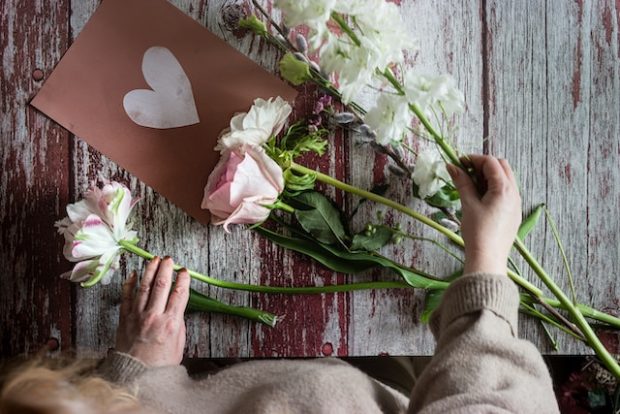History and Traditions of Valentine’s Day in the Context of Flowers
Ah, the delightful world of Valentine’s Day, a day where love blooms in every heart. Each year, countless people around the world express their feelings through flowers. This tradition weaves together romance, history, and the magic of giving. In this article, we’re going to take a warm walk through the history of Valentine’s Day. We’ll explore how it became the symbol of affection and discuss some fascinating flowers to give to your special ones.
History of Valentine’s Day Flowers
History of Cupid
Cupid is a name that instantly brings to mind images of romance. But who is this iconic figure, and what is his story? Often depicted as a cherubic archer, he has roots deeply embedded in ancient mythology. He is believed to be the son of Venus, the Roman goddess of love, and Mars, the god of war.
In ancient tales, Cupid is known for his mischievous yet meaningful actions — shooting his arrows to ignite passion in the hearts of gods and mortals alike. His presence reminds us that affection can be unexpected and transformative. Over time, Cupid evolved from a figure in classical mythology to a symbol of Valentine’s Day, representing the magic of falling in love.
Flowers Symbolizing Love
When we think of love, we often drift to beautiful bouquets and vibrant blossoms. While many associate the blooms listed below with heartfelt emotions, the unique symbolism behind each of them remains a lesser-known aspect. Let’s explore some flowers for Valentine’s Day that are especially rich in meaning.
Roses
Beyond their renowned status as symbols of love, roses have a rich history dating back to ancient civilizations. For instance, the red rose was a favorite of the aforementioned Venus. But there’s more to roses than just red. Lavender roses signify immediate attraction, while orange blooms express excitement. For a bouquet that tells a story, mix different colors of roses.
Orchids
Orchids, particularly the “Moth Orchid,” are often associated with luxury. In Victorian England, they were a symbol of rare beauty and wealth. They make a thoughtful gift for a partner who appreciates elegance. Consider pairing them with softer, fuller blooms like hydrangeas to create a contrast in textures.
Red Tulips
Tulips, especially red ones, are not as widely known as roses, but they carry a powerful message of fondness. In Turkish legend, a prince in love wore tulips in his turban, leading to the flower’s name, derived from “tulbend.” A bouquet of red tulips with white lily of the valley can symbolize your feelings’ purity.
Asters
Asters, named after the Greek word for star, were believed to carry magical powers. They were used in love potions and thought to bring good luck. A bouquet of asters can be combined with sprigs of lavender for a soothing, romantic feel.
Carnations
Carnations have a fascinating history. In ancient Rome, they were known as “Jove’s Flower” — a tribute to one of their gods, symbolizing worship. A bouquet of dark red carnations can be mixed with lighter shades to represent attachment that’s both deep and playful.
Peonies
Peonies have been revered in Asian cultures for centuries. In China, they’re known as the “king of flowers,” symbolizing a happy marriage. A bouquet of peonies mixed with delicate sweet peas and trailing ivy can create a lush, romantic arrangement.
How Many Flowers Should I Give?
Deciding on the number of blooms to give is, in fact, as important as choosing the blooms themselves. Here are a few guidelines to help:
-
- A single flower, often a rose, can represent a singular, focused emotion like deep admiration.
- In many cultures, bouquets with odd numbers of blooms are considered good luck: a bouquet of three peonies can symbolize shared love, while five lilies can represent the five senses and a deep connection.
- A full bouquet, typically consisting of a dozen flowers or more, is a classic and generous gesture. It’s often associated with significant celebrations such as anniversaries.
- For grand gestures or major events, larger arrangements can be very impactful.
Conclusion
As you’ve just seen, choosing flowers for St. Valentine’s Day isn’t always about picking the prettiest ones. It’s about finding those special blooms that echo what’s in your heart. Whether it’s a single, thoughtful orchid or a vibrant mix of peonies and asters, your choice is a reflection of the unique connection you share with that special someone.
Read More:


